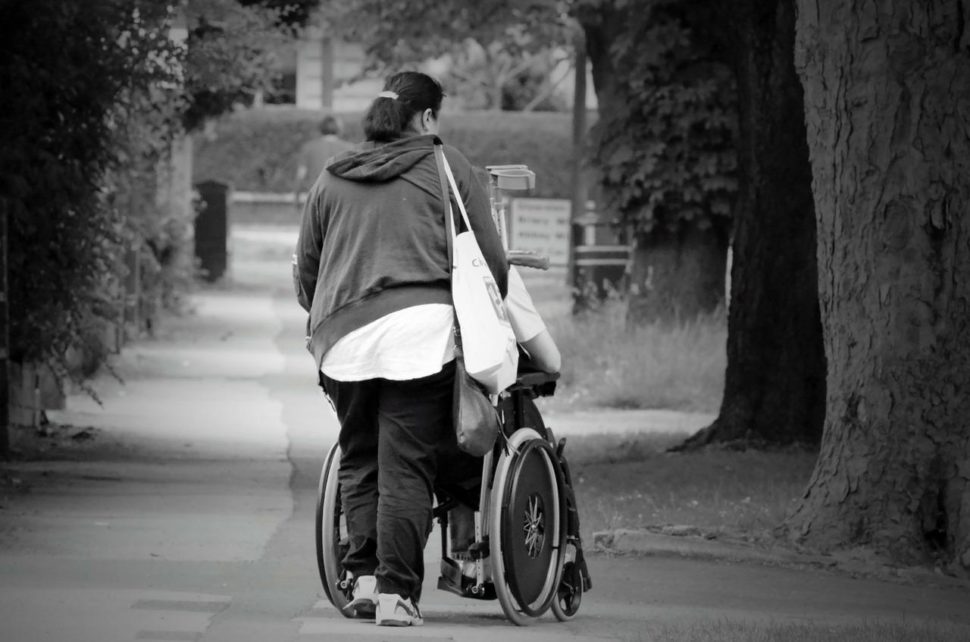“Tourism for everyone ” this is what ‘AMT CONCEPT’ is aiming for with the guide ” Handy.Brussels / Brussels for All “. This site offers a diagnosis of accessiblity for the persons with reduced mobility. In 2017 brusselsforall.be changes in a ‘Web App’ adapted to all devices. New structure, better content and grafic interface, new …
Lire la suiteFleeing war when you have a disability

Photo credit www.chionline.org
The conflict in Ukraine endangers the lives of an entire people, but people with disabilities are unfortunately the most vulnerable. Getting to safety and fleeing is very difficult if not impossible without help.
So far, among one million Ukrainians who have left the country, nearly two hundred (200) are people with physical and/or mental disabilities.
The possibility of fleeing danger or moving to reach a haven without an accompanying person makes the lives of these disabled people extremely threatened.
Tanya Herasymova, project coordinator for the militant group said the lack of support available for Ukrainians with disabilities has made crossing the border “almost impossible” for many.
She quotes: “As a woman with a disability, I faced many obstacles in times of peace and many more today when I tried to evacuate my hometown. There is practically no accessible infrastructure in Ukraine, no accessible transport, and now it’s a very big problem for people with disabilities who want to be evacuated.”
Additionally, the lack of accessibility meant that she had to rely on station staff to carry her to and from her transport: “The station workers helped me, and I was able to get on the train and (…) carried me up the stairs to the exit,” she explains. “It was horrible.”
President ‘Yuliia Sachuk’, who specializes in comparative international disability policy and law at the National University of Ireland Galway, says that people with disabilities are currently the group most affected by the war in Ukraine: “People [with disabilities] are trapped, others [with disabilities] die; we have been left behind [….] We have tried to help ourselves, but we need help. We need accessible and priority evacuation efforts for people with disabilities”
What about the rights of people with disabilities?
International law provides laws and agreements on what states must do when there is an armed conflict. The rights of persons with disabilities have been included only very partially and most of the time they are not. This is often the case when there is a risky situation for everyone, such as the current bombings in Ukraine for example.
The Convention on the Rights of Persons with Disabilities, adopted by the General Assembly of the United Nations (UN) on December 13, 2006, and entering into force on May 3, 2008, aims for States parties to the Convention to ensure that persons with disabilities are protected:
● fairly.
● in a way that is accessible.
Another legal instrument is the United Nations Security Council Resolution 2475 of 2019 which specifies that in the event of war, persons with disabilities must be protected, assisted in accordance with the rights of persons with disabilities and must be invited to give their ideas on the how to improve things and taken into account in the reports.
The United Nations also has a plan for the rights of persons with disabilities, which is called the “United Nations strategy for the integration of persons with disabilities”. This plan checks whether the work of the UN is in line with the CRPD (Convention on the Rights of Persons with Disabilities) and therefore considers persons with disabilities and whether persons with disabilities are included in problem-solving planning.
The Geneva Convention is another agreement that reminds states parties that in the event of war, there must be no discrimination regarding the protection of persons and hospitals must be protected.
Despite these legal provisions valid in the event of war, disabled people have not really been considered.
– There are no plans for the types of aids people with disabilities might need.
– There are no accessible warnings when danger is looming.
– It is very difficult for these people to get to safety. Safe places may not be accessible or in conditions suitable for people with disabilities.
– Access to medication can be a big problem for some people with disabilities.
The current situation in Ukraine shows that in reality, in the event of a war, these agreements and principles are not respected and people with disabilities find themselves alone in the face of the bombardments.
“We were left behind, and the only people who offered their support were the volunteers, without them we could not have been evacuated,” Tanya testifies.
Currently activists are trying to coordinate the accessibility of shelters, evacuations, and emergency services for these people. Fight for Right, a local NGO run by Ukrainians with disabilities and whose objective is to help these people and provide them with a rapid response in case of emergency such as raising the funds necessary to provide the support that Ukrainians with disabilities need to escape from war. Thus, the development of collective actions to make donations is increasingly present on the net.
By Bleona N.
Brussels for all becomes Handy.Brussels to make Brussels even more handy and accessible to all. Users of Brussels For All will find back the structure they know in Handy.Brussels: THE GUIDE: is the heart of the site, TRANSPORT: useful pages to arrive in Brussels and to circulate there, PRACTICAL: valuable information about, tourism, associations, health, …
Lire la suiteFollowing pictos are used in this guide : Accessible Type I : the buildings are fully accessible; the ideal situation for an active life of autonomy. Parking accessible Accessible Accessible for mobility impaired pedestrians Facilities for the blind and visually impaired Facilities for the deaf and hearing impaired Accessible for a person with a mental …
Lire la suite